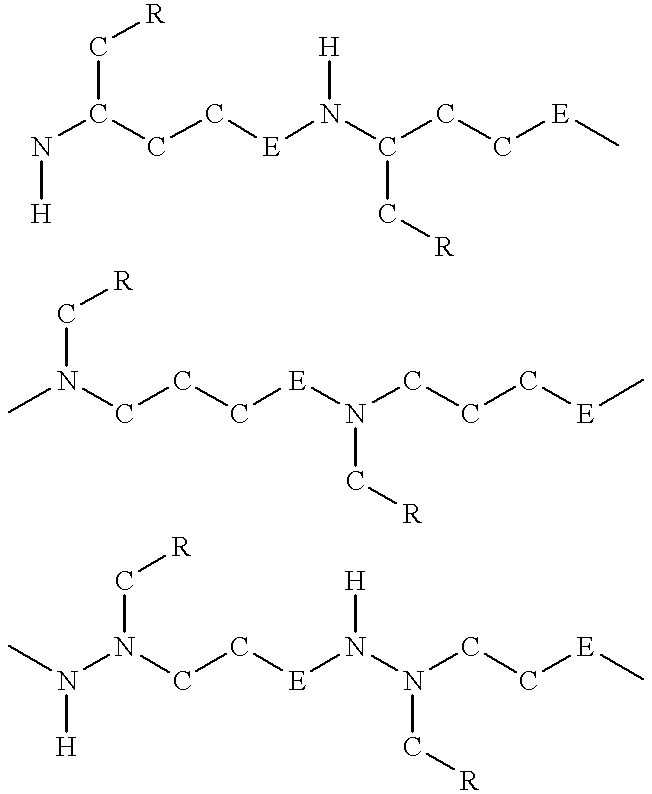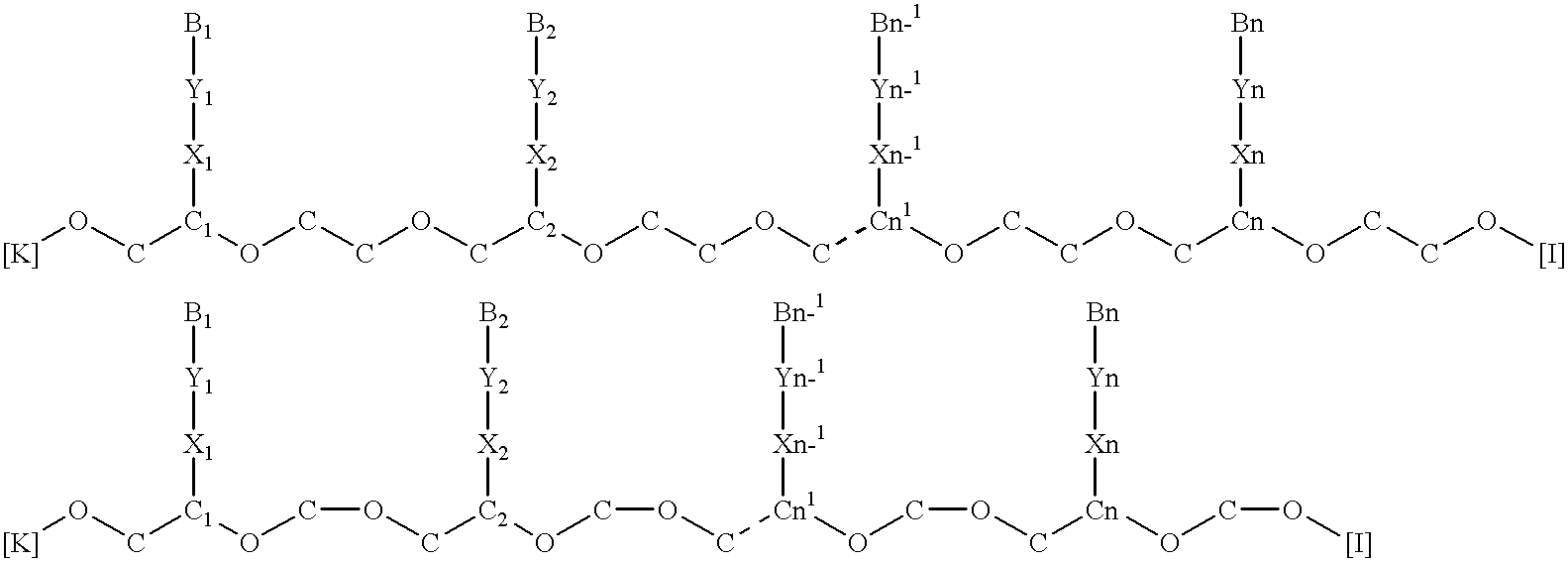Poly(ether-thioether), poly(ether-sulfoxide) and poly(ether-sulfone) nucleic acids
a technology of ether-thioether and ether-sulfoxide, which is applied in the direction of biocide, drug composition, genetic material ingredients, etc., can solve the problems of interference with correct splicing, less routine synthesis of oligoribonucleotides, and impaired gene expression
- Summary
- Abstract
- Description
- Claims
- Application Information
AI Technical Summary
Problems solved by technology
Method used
Image
Examples
example 2
Preparation of the Solid Support for Poly(ether-thioether) Nucleic Acid Synthesis
Preparation of a CPG-PEG Polymer (Polymer A)
The preferred polymeric support for solid phase poly(ether-thioether) nucleic acids synthesis according to the present invention is a controlled pore glass CPG having particle size of 125-177 microns and which is derivatized by, for example, an alkyl amine chain, e.g., propyl amine, 500 Angstrom (Pierce). To a suspension of the polymer (10 grams) in a mixture of dry DMF and triethylamine (33 ml, 10:1), a solution of succinic anhydride (4 grams) in DMF (20 ml) was added. The reaction mixture was agitated for three hours at room temperature, and the termination of the condensation reaction was monitored by a ninhydrine test. The resulting suspension was filtered and the solid support washed first with methanol (2.times.100 ml), followed by dry ether (100 ml). To the dry solid support, a solution of 1-dimethoxytrityl-hexaethylene glycol (Compound 1, which is furt...
example 3
Poly(ether-thioether) Nucleic Acids Synthesis (The Cycle)
The cycle of poly(ether-thioether) nucleic acids synthesis includes three steps: condensation, capping and deprotection.
Synthesis of Poly(ether-thioether) Nucleic Acids Polythymine
In this example, the poly(ether-thioether) nucleic acids polythyimine could be synthesized using either the Q or the Q1 compounds using otherwise identical conditions, as id further detailed hereinunder.
Condensation
To a suspension of 1 gram of polymer A in 10 ml dry ethylene glycol dimethyl ether (DME) (Aldrich), two ml of 1 M solution of potassium tert-butoxide (Aldrich) in THF, and a solution of 0.5 gram of compound Q or compound Q1 in 2 ml THF were added. The suspension was agitated at room temperature for 1 hour. The resulting polymer-bound Compound Q or Compound Q1 was filtered and was then washed with 25 ml methanol, twice with 25 ml dichloromethane and finally with 25 ml ether.
For processes described hereinafter, the following notation is used...
example 4
Preparation of PEG-Exoconjugates
This example applies for both Compounds (T-BOM)n and (T-Bz)n.
Poly(ethylene glycol) (PEG) is a water soluble polymer that when covalently linked to other substrates such as proteins, alters their properties in ways that extent their potential uses. The improved pharmacological performance of PEG-protein conjugates when compared with their unmodified protein counterparts prompted the development of this type of PEG conjugates as therapeutic agents. For example, enzyme deficiencies, e.g., adenine deaminase (ADA) deficiency, for which therapy with native enzymes was found inefficient due to rapid clearance and / or immunological reactions can now be treated with equivalent PEG-enzymes, e.g., PEG-ADA. This novel observation may open new horizons to the application of PEGylation technology.
Condensation of a Second PEG Exoconjugate in the Last n Cycle
Preparation of 4,4'-dimethoxytrityl-hexaethylene Glycol (Compound 1)
To a solution of hexaethylene glycol (8.46 ...
PUM
| Property | Measurement | Unit |
|---|---|---|
| body weight | aaaaa | aaaaa |
| temperature | aaaaa | aaaaa |
| temperature | aaaaa | aaaaa |
Abstract
Description
Claims
Application Information
 Login to View More
Login to View More - R&D
- Intellectual Property
- Life Sciences
- Materials
- Tech Scout
- Unparalleled Data Quality
- Higher Quality Content
- 60% Fewer Hallucinations
Browse by: Latest US Patents, China's latest patents, Technical Efficacy Thesaurus, Application Domain, Technology Topic, Popular Technical Reports.
© 2025 PatSnap. All rights reserved.Legal|Privacy policy|Modern Slavery Act Transparency Statement|Sitemap|About US| Contact US: help@patsnap.com



